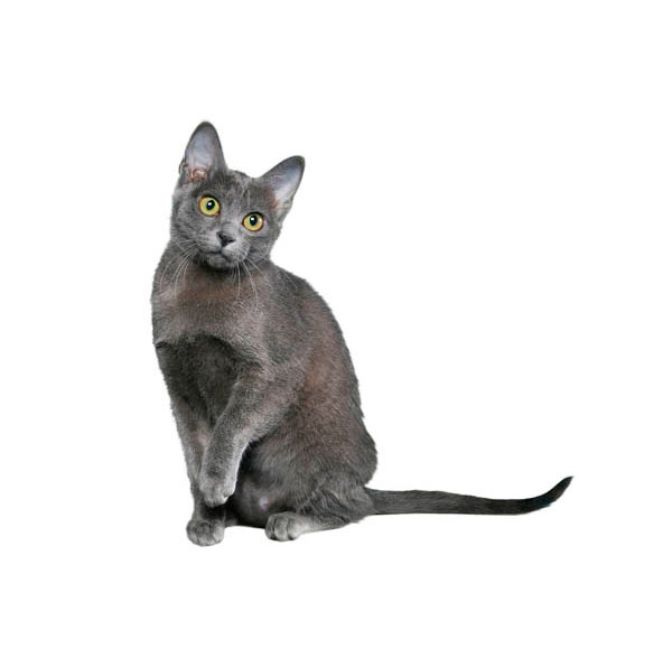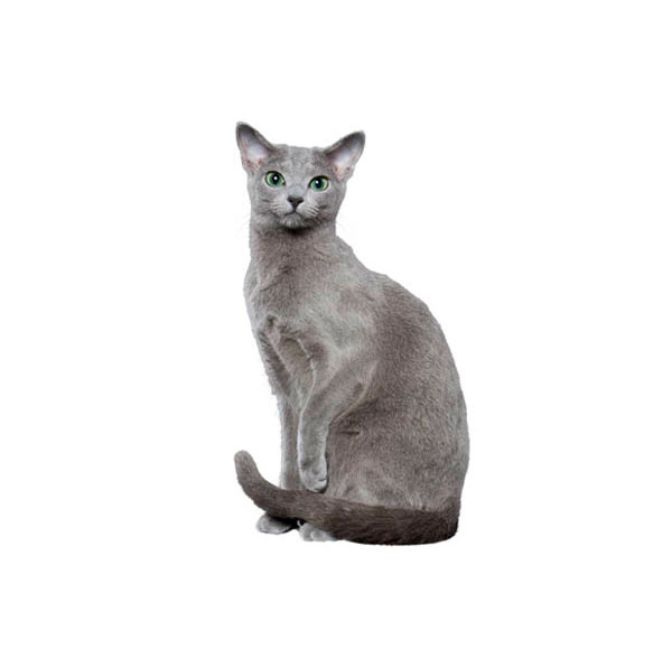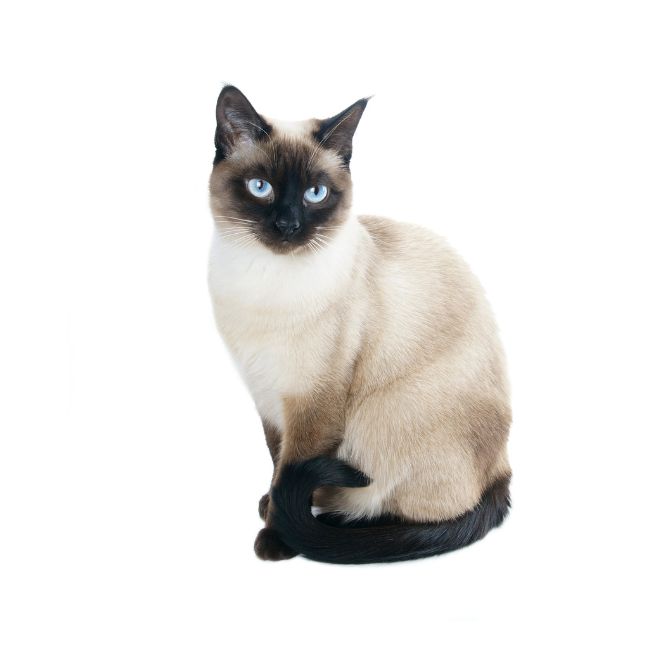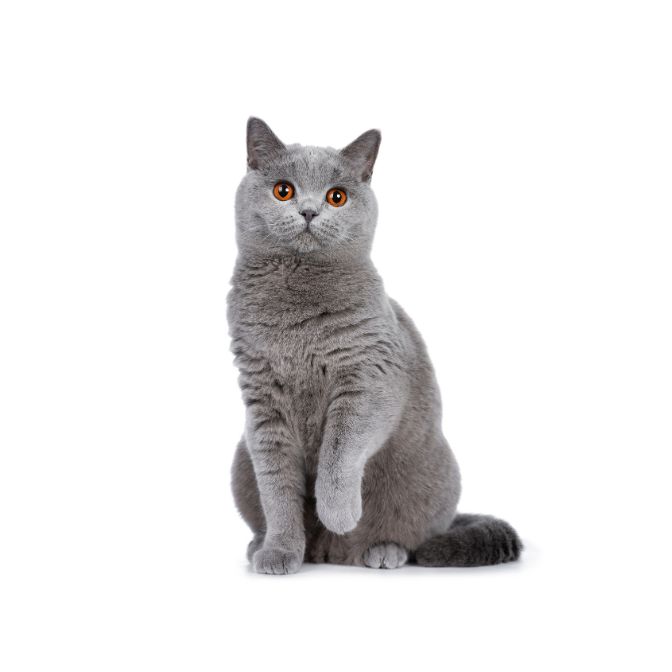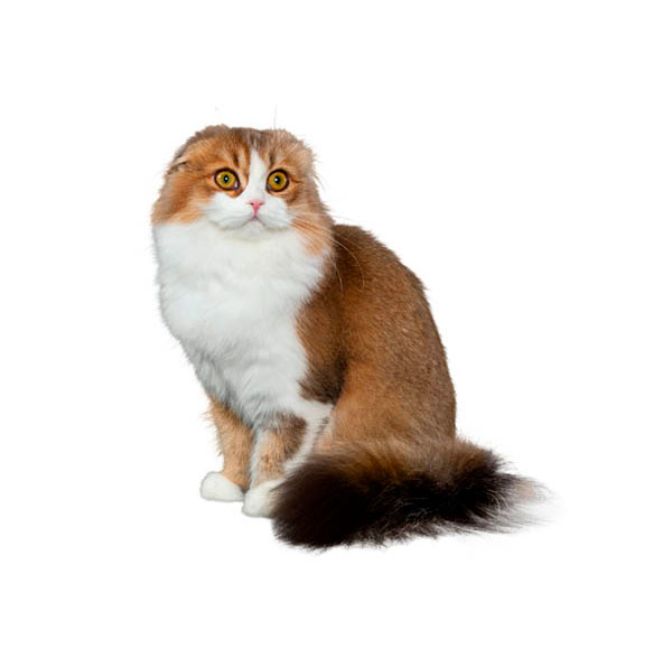Korat
A rare Thai breed, the Korat is an affectionate constant companion that is gentle and good with children. Though this cat has an action-packed personality, the Korat moves slowly and cautiously and does not like sudden, loud noises. The breed is said to have extraordinary powers of hearing, scent and sight. The Korat’s silver-tipped blue coat, described in Thailand as rain-cloud gray, has a shimmering effect.
Medium
Short
High
2.5 to 5kg
The coat colour is any shade of blue tipped with silver
The Korat has a quiet, sweet nature but is very intelligent and playful. They make ideal household pets and can be devoted to their human companions. They get on extremely well with children but do prefer a quiet home as opposed to an unruly household.
The Korat is of medium sized and is muscular and athletic. They are very like the Russian Blue in appearance, but have a single rather than a double coat, are more rounded in shape and have peridot green rather than emerald eyes. Females are daintier than males.
The head has a characteristic heart shape when viewed from the front and is widest across the eyes. The forehead is large and flat and the nose is short with a slight downward curve. In profile there is a stop between forehead and nose. The chin and jaw are strong and well defined.
The ears are large and taper from a wide base to a rounded tip. They are set high on the head giving an alert expression. The wide set eyes are large and luminous, wide open and appear to be large in proportion to the face. They are brilliant peridot green but a slight amber cast is acceptable in show cats.
The body is strong and muscular, neither long like a Siamese nor cobby like a British Shorthair. The back is carried in a curve. The legs should be in proportion to the body with the hind legs slightly longer than the front. The tail is of medium length, broad at the base and tapering to a rounded tip.
10 to 15 years.
The Korat’s coat is short, glossy and fine and lies close to the body. The coat over the spine tends to 'break' as the cat moves. The coat colour is any shade of blue tipped with silver and the more silver tipping the better in a show cat, which should also have no tabby markings.
The silver tipping develops from kittenhood to adolescence and finally reaches its full intensity at about two years of age. The nose leather, lips and paw pads are dark blue-grey or lavender.
The Korat’s short coat does not require special grooming although they will enjoy a groom with a soft brush for the attention it brings from their human companion.
The Korat has no specific health problems and is capable of living a long and active life well into their teens. It is advisable to have an annual health check from about the age of eight or nine to check teeth and liver and kidney function.
The Korat will require approximately 70-80 Kcals of food per kg of bodyweight per day. They are not prone to obesity and tend only to eat what is necessary to maintain their weight.
The Korat is one of the oldest natural breeds and comes from Thailand. It is named after the province in which it originated, although in Thailand it is often known as ‘Si-Sawat’, which means good fortune, and they are highly prized in their homeland.
One may have been entered in a British cat show in the 19th century as a Blue Siamese. They first appeared in America in the 1950’s and arrived in Great Britain from there in 1972. They are one of the few breeds that are only available in one colour, in this case silvery blue.
Discovered in the Korat province of Thailand, the Korat has been cherished in her native Thailand for centuries as a symbol of good fortune.
The expressive, oversized eyes of the Korat have an intense gaze that is said to take one’s breath away.
The eyes are blue at birth but change to amber with green around the pupil during adolescence and then luminous green in two to four years.
